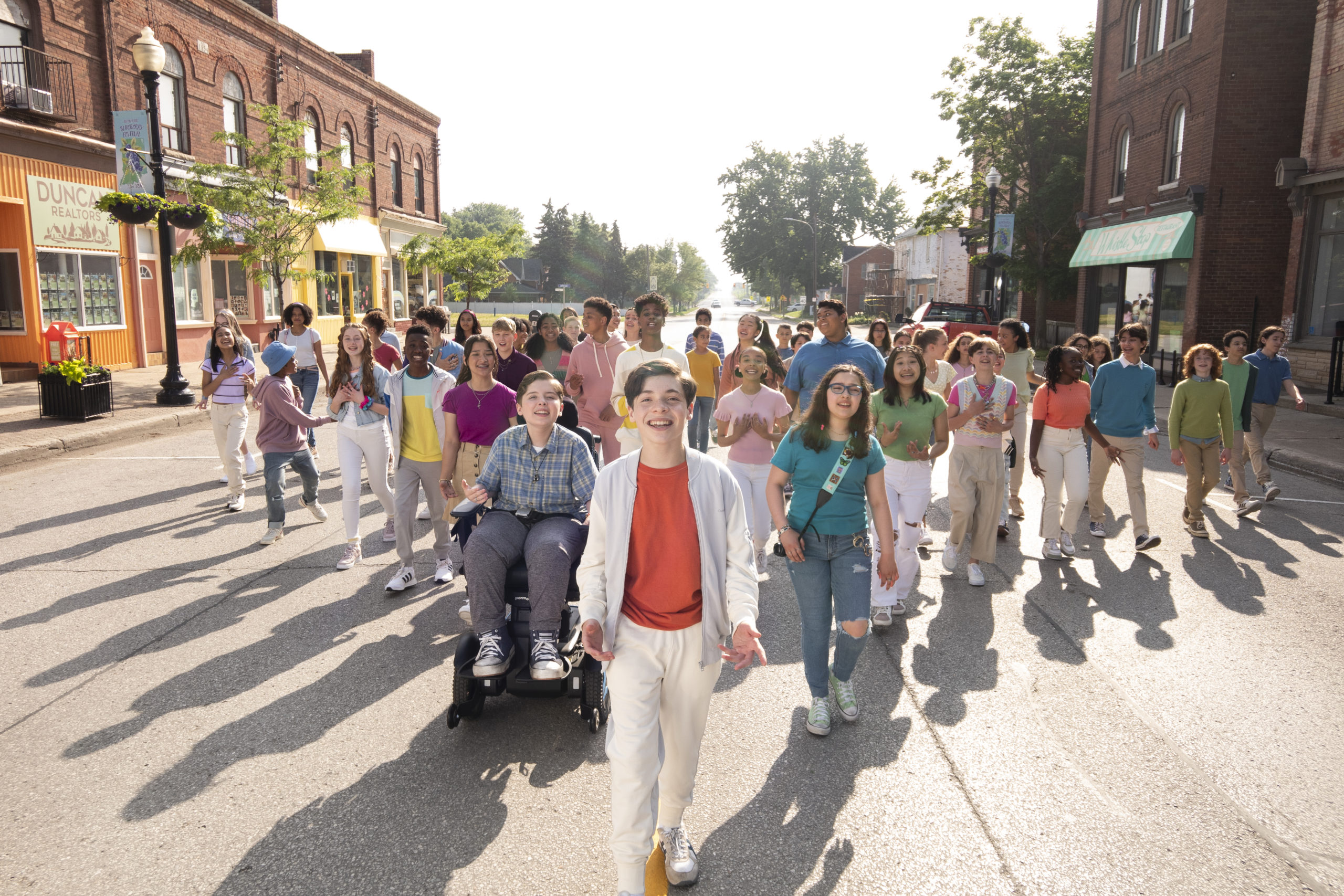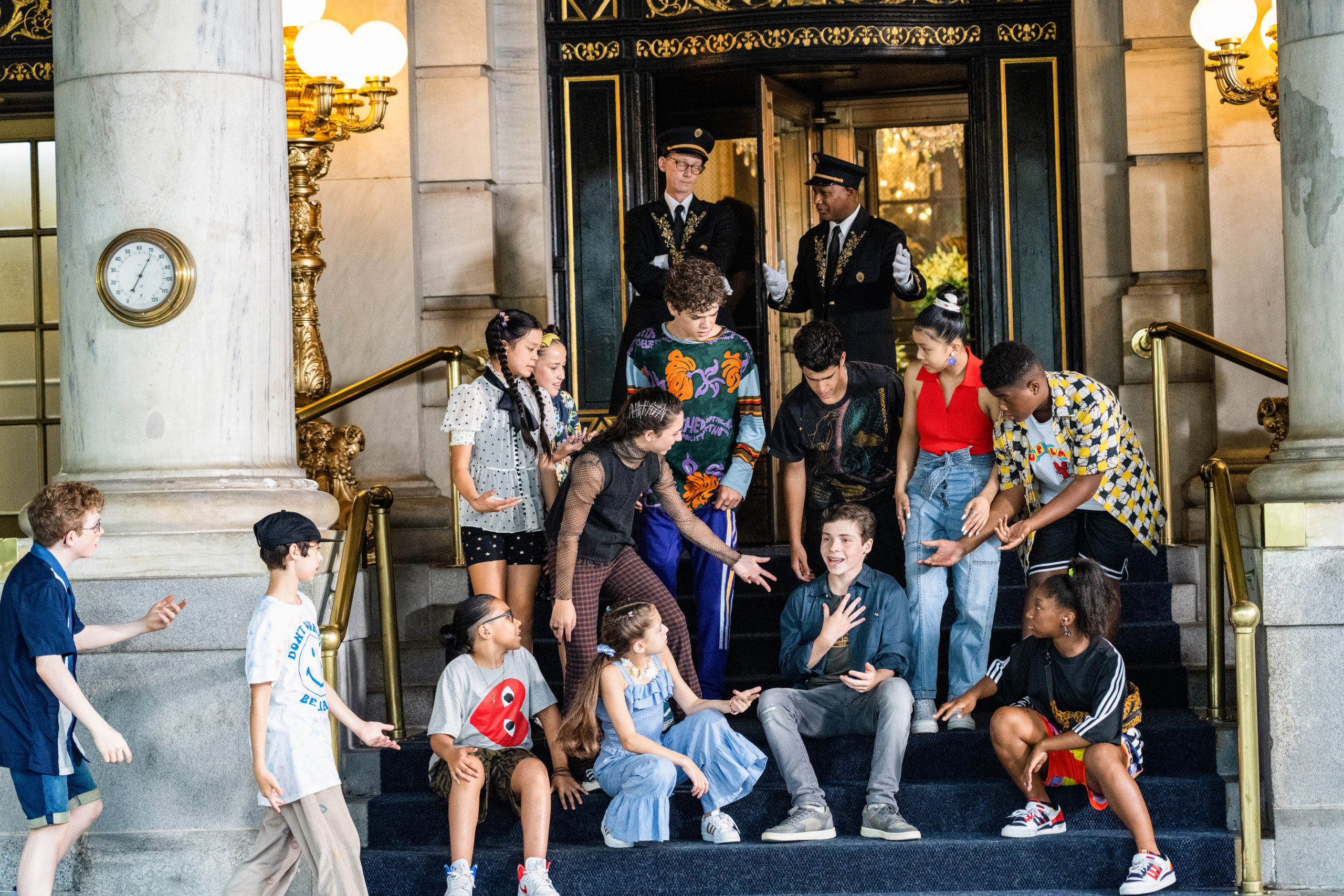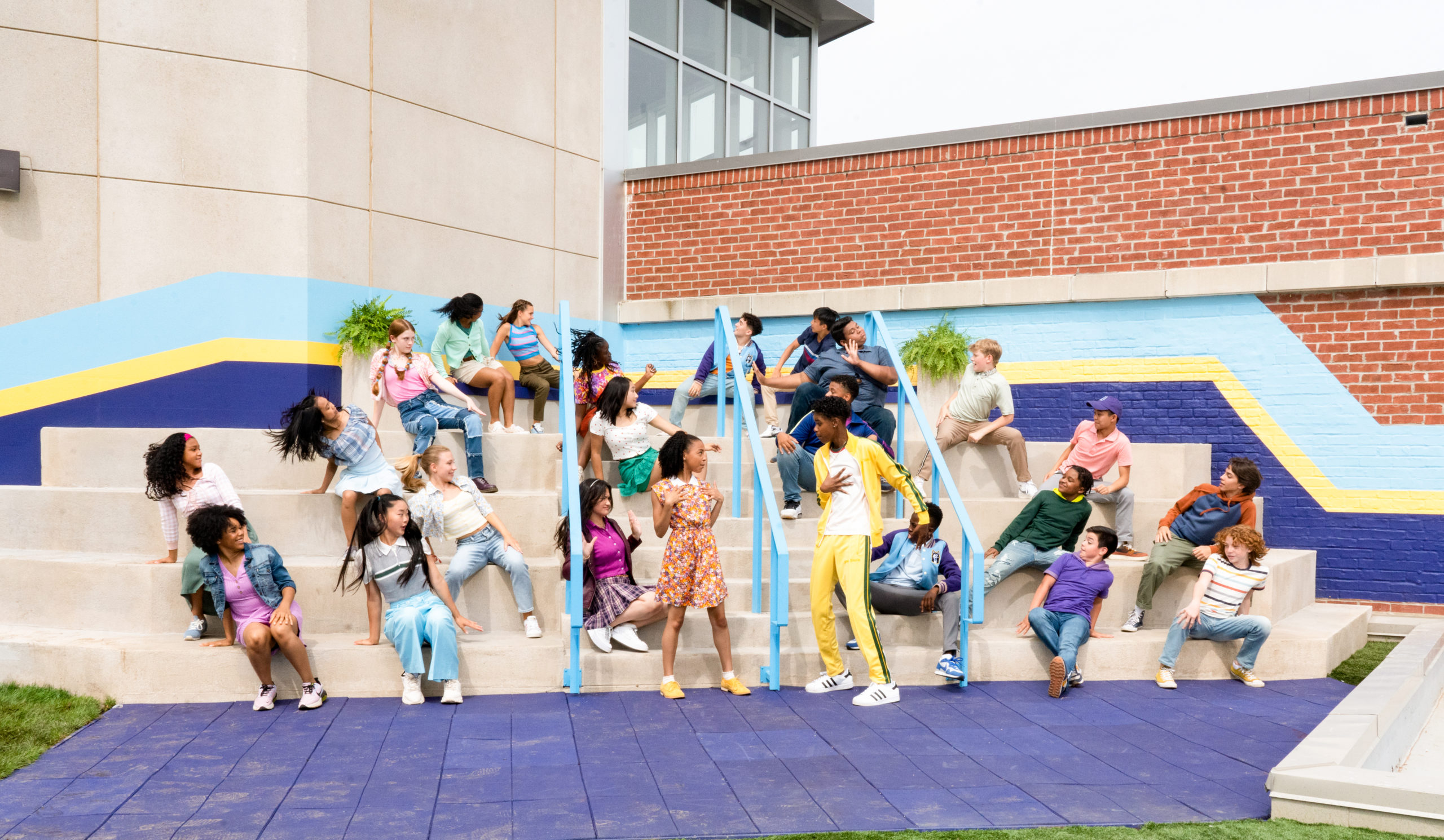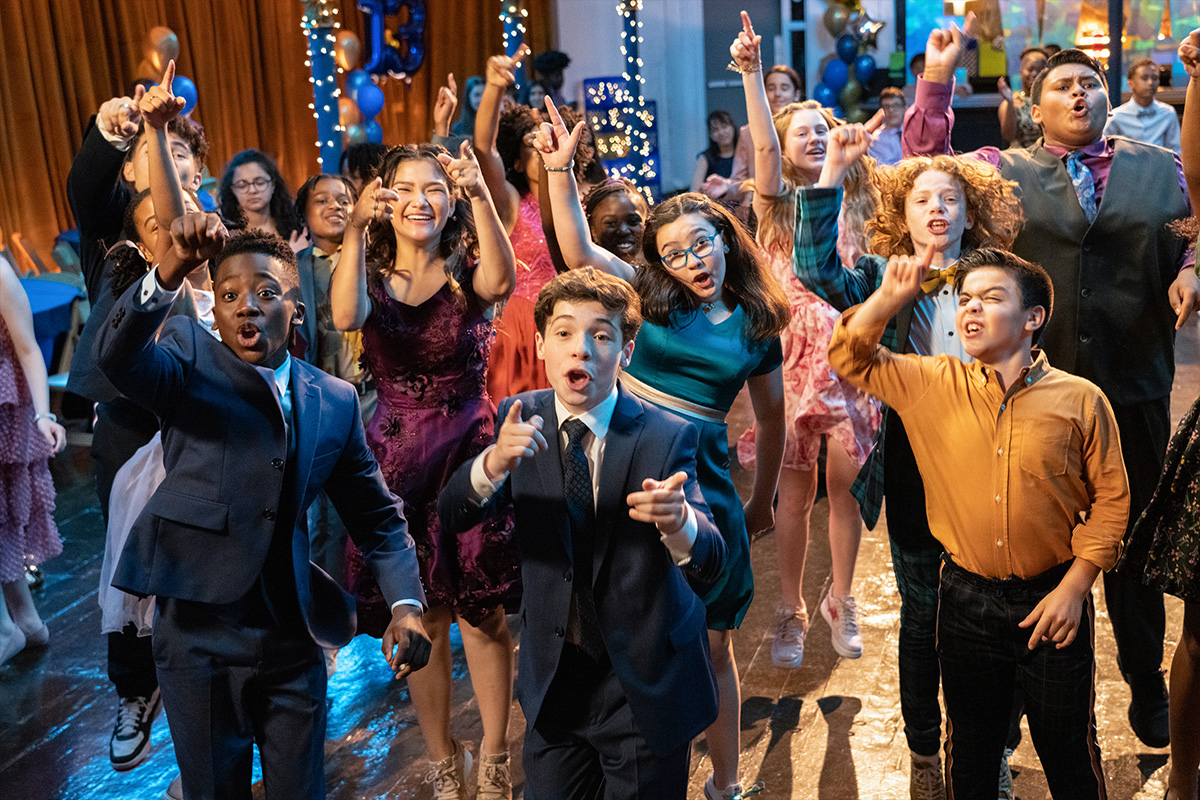“13: The Musical” is a distinctly Jewish musical about 13-year-old Evan Goldman’s move from New York City to Indiana, amidst his parents’ divorce and preparation for his bar mitzvah. Evan’s anxieties about coming of age, his faith, family and new friends are compounded by his plans to make his bar mitzvah “the party of the year,” or as he also calls it, “the Jewish Super Bowl.”
The musical, composed by the Jewish Jason Robert Brown, initially opened in Los Angeles before its Broadway debut in 2007, and was recently adapted by Netflix into a film, starring Jewish actors Josh Peck, Eli Golden, and Debra Messing.
Released on August 13, the costumes form a critical part of the storytelling, and were designed for the Netflix film by Emily Gunshor, an accomplished Jewish costume designer who has worked on projects such as “The Secret Life of Walter Mitty” and “War of the Worlds.” Gunshor initially came to New York City to study ballet, but after an injury, she found a new path in costume design.
I sat down with Gunshor to discuss the Jewish inspiration behind her costuming for ”13” and how she designed her iconic bar mitzvah looks.

This interview has been edited and condensed for clarity.
You’ve worked on a lot of films. How is working on a musical movie like “13” different from a more straightforward film?
In a regular movie, an actor or actress really needs to feel confident in themselves, and in how the clothes fit. There’s a lot of character development within their clothes and accessories. That is just ten times heightened when you get into a musical, because not only do they need to feel comfortable and confident, but they also need to be able to move and dance and interact with the choreography. So it’s just an extra, added level of thought that goes into everything anybody is wearing at any given moment through the movie, which was extremely fun.
How do you costume people so they can move and dance, but still have the outfits look totally in character? What sort of movements do you need to think about?
For “13,” from the very beginning, I met with our amazing choreographer Jamal Sims (“Encanto,” “Aladdin,” “Step Up,” “Hairspray,” “Hannah Montana: the Movie”), to watch what he was planning for them and talking to our production designer to see what that was going to be. I watched the ideas behind what the movements for each song were going to be and saw them doing the choreography. There was a lot of collaboration with director Tamra Davis (Depeche Mode, Guncrazy and Sonic Youth).
Are they going to be on concrete and needing to pirouette or are they going to be on the football field in cleats? And maybe we should take these cleats away and put them in sneakers so that they can do these moves? Now Brett’s going to slide down the banister of the staircase at the front of the school, and he can’t be in shorts for that! He better have pants on.
Little things like that. We had to remain flexible, but also keep all the costumes true to their personalities.
It is such an interesting aspect of film production. How did you get your start as a costume designer? Was this always the plan?
I started studying costume and originally was aiming to go into theater, but then I was introduced to [production designer] Ann Roth (“Dracula,” “The Beguiled,” “Going in Style”), and got really into costumes for film just because there is more of a story that can be told, and further gets into character development.
“13” was a very exciting project for me because it was a culmination of my studying of dance and theater and my love for that, and bringing it into the film world.

How did you use clothing to reflect the differences between New York and Indiana?
I wanted to make a clear, definitive color palette for New York versus Indiana. So New York’s colors were black and grays and burgundies and dark, muted colors. And then once we get to Indiana, to kind of help accentuate the difference and the adjustment that Evan’s going to need to make into this new life, Almitra [Corey, production designer] (“Dave,” “High Fidelity,” “GLOW”) nd Tamara and Adam [Santelli] our director of photography (“Descendants 3,” “Fear the Walking Dead,” “Freaky Friday the Musical”), and I decided that it would be a stark change. Starting in Indiana, there’s no black cars. Black was a very limited color. There’s no gray. All the kids are much brighter in their color palette, and the school colors are the bright purple and blue with the accent of yellow.
So it’s these really bold, nice, bright colors. The inspiration for that was all the Jacques Demy musicals, specifically “The Young Girls of Rochefort.” We wanted to kind of have that mesh together.
New York kids were very bold, stylish, much more fashion forward, darker in color tone pattern. A little bit more edgy and sophisticated. Whereas once we get to Indiana we have them a little bit more run of the mill mall. Not that that’s a bad thing! It’s just a different place in the world. It’s brighter and more colors, a little bit more floral printed. Not so edgy, still stylish and fun and cute. Lots of people resonate with that. So they’re a little bit more into the sports and to the cheerleading and the football aspect of life.
A little more accessible.
Exactly!

The cast is, unsurprisingly, full of actors who are around 13. Is there anything specific you had to keep in mind when dressing young adults?
This is the loveliest group of kids, actors and adults. [I was working with] Rhea Perlman and Debra Messing; they were all just so divine and lovely to work with. These kids came for a lot of fittings. We started by just getting measurements and watching them move. They were also 12-years-old while we were making this last summer [in 2021], and we had a chart going of whose feet were growing the most and who got taller. Every day it was a different thing. I think that Nolen [Dubuc] (Malcom), started out with his shoes one size and by the end of the movie, we had gone up two full sizes. There was a constant adjustment. I think Eli, who plays Evan, grew two and a half inches in the time that we were shooting the movie.
With a lot of the girls’ dresses, unfortunately, we were prepping this movie in the height of the pandemic in Toronto and all of the stores were closed. So, we had a very difficult time acquiring things. We ended up making about 80% of the dresses for the final scene of the movie, and/or cobbled them together.
I was very conscientious of trying not to oversexualize this; it’s a religious event and it was a dance party for young kids. They want to express themselves, they want to feel beautiful and have body positivity and show off, but I didn’t want to do any too tight or overly revealing outfits. So we went through with each girl and picked the dress and made something work.
There’s something that’s really nice about having a great tailoring department team of people who can reconstruct clothing, because, as we know, shopping for somebody who’s between the ages of 12 and 15, [is] very difficult in the world because clothing is either cut for younger children or adults, and in these pre-teen and teenage years, body shapes are changing and clothes don’t fit perfectly for it.
And it couldn’t be too short because they were going to be dancing and spinning and kicking for the performance and dance number.
The fashion trends of bar and bat mitzvahs can be so particular! How did you research what the actors should wear?
Yes! I’m a mom and an aunt, and my niece was actually having her bat mitzvah while we were in Toronto making this movie. So, I was often asking for pictures of her friends and what they were doing, and looking at Teen Vogue and seeing what other young adults were doing with their clothing and how we could incorporate that into the movie. But I also wanted to set the tone of what styles we wanted to say were fun and pretty cool.
My niece had custom Nikes with her dress and nearly all of our kids wore sneakers to Evan’s bar mitzvah. Unlike my personal bat mitzvah where I wore a stacked heel and a dress from Betsey Johnson! I also thought back to myself at this pivotal age and reflected on the time in my life with friends and relationships. I was happy to have the knowledge of customs for these ceremonies and tried to draw from that within choices in the movie, but also keeping the movie grounded in this modern age with a large variety of types of people.



